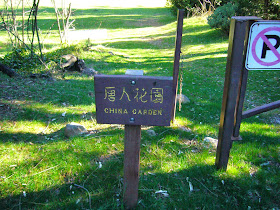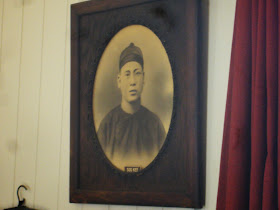 |
| Arapaho Thornless Blackberry Vine |
You bet they are! And Bill and the wife that is Venus Bird like it that way! Welcome to May 2015 -- and one of the coolest spring weather patterns I think I've ever experienced in the Sacramento area. That doesn't help much when it comes to summer producing vegetable plants like tomatoes and cucumbers, but the Bird berry patch likes it just fine.
The big winner in this year's berry battle in the Bird Back 40? It should come as no surprise by now. For the second straight year and the fourth year since I brought it home and planted it, the Arapaho Thornless Blackberry is sporting a massive crop of berries that are, in some cases, three inches long and an inch thick. I wrote about this particular variety last year.
 |
| Arapaho Blackberries |
The Arapaho continues to defy zone logic. The plant professionals claim it's not supposed to do well in this climate. It's more suited for cooler climates not found in my Zone 9A. It's supposed to do better on the coast and up north where it doesn't get quite as hot. But berry plants are funny customers. Arapaho berries grown on a commercial basis on the coast, where it is cooler, suffer from tip dieback. But here in the more inland, hotter, area? The Arapaho does just fine.
Time and study will determine just how well the Arapaho will do in California. Although it's not the most recent introduction from the University of Arkansas breeding program, it's still fairly new to our area and climate. Although it may eventually prove to be a bust on a commercial basis, it seems to do just fine in your ordinary home backyard setting.
 |
| Shuksan Strawberry Patch |
If there is one big difference in the Bird Back 40 berry battle -- it's that the Arapaho isn't the only berry sporting a fat crop this year. Nope -- it's a tie. For in 2015 there are 20 second-year Shuksan strawberry plants putting on a big show in what will eventually prove to be the largest and most luscious strawberry harvest we've ever experienced in these parts.
The introduction of the Shuksan strawberry has been a years long, trial and (mostly) error, attempt to grow strawberries in the Bird Back 40. I wasn't interested in those small, sweet berries that emerge from most backyard settings. Nope -- I wanted in on the action that comes out of our local strawberry fields: strawberries the size of a golf ball or larger.
 |
| Shuksan Strawberries |
At first I thought the answer to my berry wishes would be the Chandler Strawberry. The production was, in a word: Meh. Then I thought a combination of Albion and Gaviota strawberries would be the answer. They should do well here, right? That's what the experts told me. It's the recommendation I found online here. In fact, they advised the following: Recommended strawberry varieties for California: Albion, Aromas, Camarosa, Camino Real, Chandler, Diamante, Gaviota, Oso Grande, Pacific, Seascape, Selva, Ventana. (According to the California Strawberry Commission)
But guess what kids? Don't believe everything you read online. Yes -- these might be great strawberry selections for some regions of California. But not here in the heat of inland California. It wasn't until I started checking each and every strawberry plant selection offered here, and checking the recommended zones very closely, did I stumble upon the Shuksan Strawberry. Recommended for Zones 4-10. That was my "Eureka" moment.
 |
| Bird Back 40 Berry Patch |
If this is the kind of production I can expect from 20 second year plants, what happens next year when the additional 40 plants I ordered and planted this year swing into full production? 60 plants instead of 20? How about 80-100 plants? Strawberry overload anyone?
I'll take it.
Despite the very berry success this year -- I'm just getting started. For where there is a bare patch of dirt in the Bird Back 40 -- there's room for another small raised bed and perhaps another berry plant or two. I've got my eye on another recent introduction from the University of Arkansas breeding program. This is one is also thornless. It is called the Ouachita Blackberry -- which does well in gardening zones 5-9.
Because man does not live on blackberries alone. But, personally, I would if I could.













































